Children need to move to learn best. How do you figure out movement that challenges older children, yet matches with the feel of the song? Here’s one suggestion for “I Know That My Savior Loves Me.”
Down Up Down, Down Pop Down. (Switch sides) Down Up Down, Down Pop Down.
The “down” is actually hitting your thigh or lap with your hand (patsch). The “up” is clapping the bottom hand (palm) to the top hand (also palm). The “pop” is closing your bottom hand to an open fist and bringing it up to tap the top hand.
I write on the board “Down Up Down, Down Pop Down,” then ask the children to follow my hands. I go very slowly at first and talk the children through the movement as we do it together. I then ask for a child or two who thinks they can demonstrate this pattern a couple of times while I sing. A couple of children come up to the front of the room. I sing the first word “a” and indicate that they start on the pattern on the next word “long.” (I usually do the pattern right alongside those two children as I sing. It is a whole new level of complexity to sing while you do the pattern! I actually have to practice this at home for a while to get it.)
About half way through the verse, I stop singing and ask if there are two or three more children that can come up and join the two in front to do the pattern. When they come up, we start that pattern again and I sing the last half of the verse as they do the pattern. The rest of the children have now seen the pattern and heard the verse all the way through. I turn and challenge all the children to do the pattern as I sing the whole verse. Occasionally a couple of them sing a few words with me, but often they don’t sing because they are concentrating so hard on the pattern. I don’t mind this at all, knowing it is giving them an opportunity to hear the whole verse as they are moving to the beat. (Did you notice how they are crossing the midline as they do the pattern? Great for their brains!)
I change the movement on the chorus. Swish Pop Pop, Patsch Patsch Patsch. I call out “Freeze!” to the children and show them the new pattern for the chorus. (This pattern is much easier for them.) They follow me as I sing the chorus.
“Can you do both patterns to the song while I sing?” I ask. We do the patterns again as I sing the song. The children are engaged, challenged, and moving. When we finish the song, I immediately launch into the next activity with the contrasting song. I’ll save that for the next post, as well as a movement for the younger children to “I Know That My Savior Loves Me.”

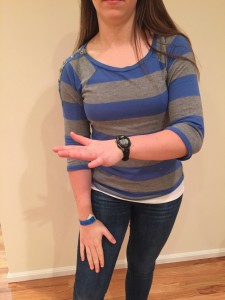
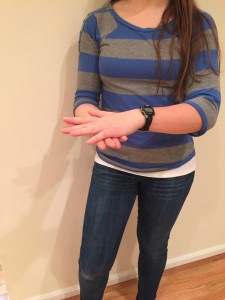
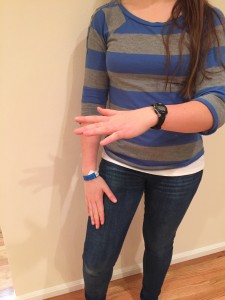
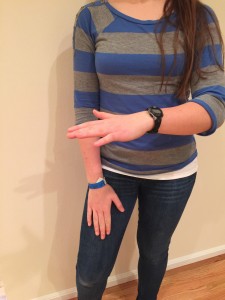
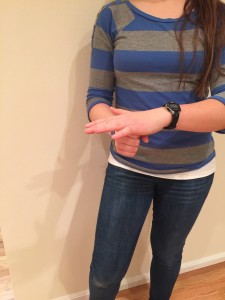
Nannette
Thank you so much! I am so eXCitEd about this blog! I want you to know how very thankful I am for you and all that you have taught me.
Sharla Dance
You brought a smile to my face!
Kami
Thank you for these ideas! Can you describe what a “swish” is? Thanks!
Sharla Dance
A swish is brushing hands together (one going forward and one going pulling back). If you have sand blocks in your hands, it makes a very cool sound, but it works great without any rhythm instrument, too.
Sharla Dance
Swish – Brushing your hands together. Thanks for asking.
Ariane Dockstader
Do the kids eventually pick up the words without you actually teaching them line by line?
Sharla Dance
Ariane, that is a great question! I should probably pay you for it. What happens is that the children hear the song as a whole so their brain picks up on the rhythm, the beat, the melody, the shape, and the form of the song. That gives a great “closet” for them to hook in the words. I focus on the words about three to four weeks in. They are learned in half the time because the children’s brains already have a place to hook it in. They remember the words for a longer period of time, and they have a great feeling about the song because of the attitude they felt when they were doing all of the different activities. I would say they learn the words even better doing it like this!
Sharla Dance
Dear Ariane, I’m writing a post on that right now called The Principles of the Back Door. Thank you for asking! (the short answer is yes because of how the brain works when you are engaged in learning)
Amy
I am so, so happy you are providing these lessons. I admire your teaching methods and have used several of them over the last couple of years. The children have loved them (especially the paper plates). Thank you for your time and sacrifice in putting this information together.
Sharla Dance
You are welcome Amy. I am just an instrument, not the source. Take care, Sharla
Shana Kummer
Do you have the piano play while you do this so they hear the melody that way also or do you just do it acapella?
Sharla Dance
Shana, If you are strong enough to sing alone, then it would be better for the children if you sing without piano. (The sound waves of the human voice are less complex for the children to attend to and thus match their voices to it.) However, if you need the piano, go for it and have them play the melody.
Sharla Dance
If you feel more comfortable with the piano playing as you sing, I would use the piano. However, the pianist has to be right with you when you stop and start. For this reason, I often sing a cappella at first.
Jenny Bayles
I have practiced this for about 45 minutes now and it’s STILL tricky for me. 🙂 If we notice that the children are getting frustrated about not getting the pattern and trying to sing, do you suggest switching to a simpler pattern, or verbally suggesting that they focus on the pattern and don’t worry about singing? Slowing things way down? Which will benefit them the most?
Sharla Dance
Great comment! If it is not challenging for us as adults, it probably won’t be challenging to the older children. AND yes, please simplify it once you watch them and see frustration. I often preface the activity with something like this, “Even if it is hard, ‘just keep swimming’ like Dorie in Finding Nemo.” One way to make it easier is to do a patsch pop patsch patsch patsch pop patsch. And thank you for mentioning the singing… I don’t ask them to sing, but I sing myself. (That’s why I have to practice!) When they are so intensely focused on the movement that matches the beat and meter of the song, their brains pick up word correlations with the movements even when they don’t realize it.
And yes, I do slow it down at first. I have had boys come back and demonstrate the pattern to me after they practiced it at home! I think this will be an amazing experience for them, especially with you as their guide.
Jenny Bayles
This activity was SO successful for our Sr. Primary today. With the 8 year olds moving up this year, we are up to about 35 kids in the Sr. Primary and it’s pretty intimidating. We have an incredibly smart bunch that often tries to “one up” and impress each other, so if they aren’t engaged in the activity – it gets out of control fast.
This is exactly what they needed. Not a lot of talking, just focused attention. We’ve done body rhythms before, but usually much more simplified because it doesn’t come naturally to me. Practicing a while beforehand made all the difference for me. Thank you for giving me more confidence and seeing how successful this activity can be for this age. The new 8 year olds didn’t quite get it, but they tried the whole time and it will be fun to see how their ability improves as they grow. The 10 and 11 year olds rocked it and I even had a few ask, “Can we sing along?” (which is amusing because they are ALWAYS welcome to sing along!) I was impressed at how well they picked it up AND did the singing at the same time. The teachers had as much trouble as the 8 year olds, but they tried the whole time too. 😉
Sharla Dance
I’m just smiling! I love it when an activity really works! And it makes me grin to have them “ask” if they could sing. Way to go. (I’m so proud of you for being able to do it! It takes practice to sing with it because your brain is having to do a million things.)
Megan Robinson
I LOVE this idea! Wish I would have seen it before this morning. Most of the older kids in my Primary already know this song as it was part of the program a few years ago. They will be ready for something different next week, so I’ll have to practice this week. I’m not a solo singer, so that makes me a bit nervous.
Would LOVE to see a video of how you present this. Pretty please with extra sugar and cream on top!
Sharla Dance
Megan, you made me chuckle with your pretty please with extra sugar and cream. I can’t video Primary so it would just be me (that’s intimidating), but I will try to get something for you. P.S. Have one of the older children who know the song come up and be your singer with you.
Stephanie Hadfield
I tried this with my Senior primary kids and it was a HUGE hit. The atmosphere in the room was positively crackling with concentration and delight. (My 10 year old son is typically tough to impress during , but I saw him practicing the rhythms when we were home and he thought that no one was looking) We followed this up with singing “I Feel My Savior’s Love” and having the kids take turns drawing pictures on the whiteboard of things that remind them of Jesus’ love for them. It was a pretty powerful combo.
Also, I’ve got to tell you a sweet story: I watched your training video and read your book when it first came out last year and your ideas sparked a change in how I plan and carry out singing time. It’s made a big difference for us all over the past few months. On fast Sunday, one of my Sr. boys bore his testimony saying that he’d been sick all week, but prayed on Saturday night that Heavenly Father would bless him to get better so that he could go to singing time in primary. He was pretty thrilled that his prayers were answered. 🙂
Sharla Dance
Stephanie, there is nothing quite like the satisfaction of having that kind of experience. It is not entertainment, it is not hype, it is not passive. It is deeply felt by the children, it does feed their brain and their souls. I’m so pleased for you. I would want to be in your Primary, too!
Laura Bickmore
Two questions –
1 – What are your ideas for the younger kids for “I Know That My Savior Loves Me” – if you planned these activities then you must have done something with them, right?
2 – Would doing sign language or waving scarves with the juniors be as effective as the other rhythmic movements you are doing?
3 – You have a book??? I just discovered your site – I would love to know more about any books you have written or a training video mentioned above by Stephanie Hadfield…
4 – Finally, would it be a good idea to repeat your lesson plan – Follow The Prophet/I Know That My Savior Loves Me two weeks in a row? Again, I just discovered this sight and I LOVE IT. I did the movements you suggested to follow the prophet – it went perfectly in JR. primary, but in Sr. primary I decided to try doing a lesser known verse – and it didn’t go so well. I didn’t know the verse so well and hadn’t practiced the more complex movements, so we struggled a bit. Not sure if I should do the same things next week, or mix it up a bit…
Sharla Dance
I am putting the movement activity for Younger Children up this week, probably tomorrow evening.
Sign Language is a great activity for all ages because the physical activity directly related to the words imprints the meaning and words in a different place for the brain than just singing them does.
Scarves have to have a certain challenge for them (circle here, brush the sky here, wave on the floor here), or they don’t enjoy it as much.
The book is being sold at toteachachildasong.com. My son is sending them out to those who order them. I have 10 chapters of ideas that I have “simmered” for about 10 years so that I could express them in a good way. Hope it helps!
About repeating…the brain craves variety, but definitely needs repetition. If you think there is a challenge they would still have to conquer, then yes, repeat. I am putting up two completely different ideas for both songs on Thursday. The hope is that they will learn the feel of the songs, the emotions of the songs, the beat and rhythm of the songs, and eventually each word of the song deep within their souls. That’s why we do so many different kinds of activities for each song. There’s so much more to be learned than just the words! Thanks for asking!
Laura Bickmore
Whoops – that should have said a *few questions. Not *Two questions. Originally I had 2 questions, but then of course came up with more..
Caryn M Rasmussen
Do you have a video for this, Sharla? 🙂
Sharla Dance
No video, but the pictures are pretty sequential. Hope they help.